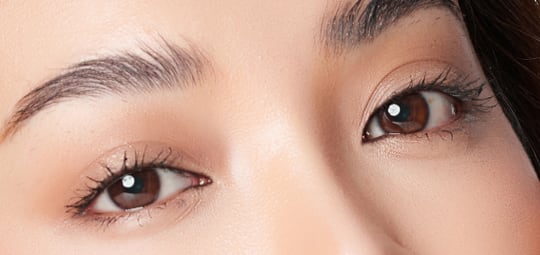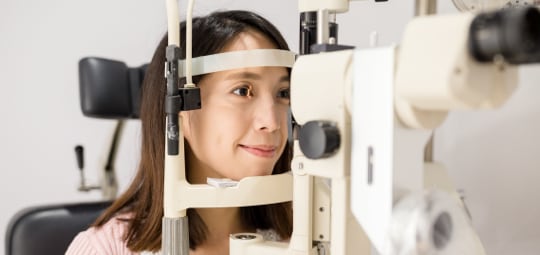Have you ever wondered what it means when someone says you have “20/20 vision”? You’re definitely not alone! This is one of the most common questions we get asked on a daily basis, so I’ll explain what it means.
20/20 vision is a common term used to describe normal visual acuity or clarity of vision. It is determined by testing a person’s vision at a distance of 20 feet away from a visual target of a specific size. So if someone has 20/20 vision, it means that they are able to see a specific target 20 feet away in the distance.
How does your eye doctor determine if you have 20/20 vision?
Ever notice those strange mirrors and projectors in the eye exam room? They’re not for wacky decoration! These mirrors are used to “extend” the length of the room to simulate a distance of 20 feet for this type of vision testing. The instruments project the eye chart onto a wall and then the image is bounced off mirrors to be visible directly in front of you. This makes things seem 20 feet away, rather than the actual length of the exam room (which is usually only ten feet long).
Objects Closer than they Appear
It is important to have regular eye check ups even if you feel your vision is good or if you think you are not having difficulty seeing. Most eye diseases begin with little or no visual symptoms at all, so waiting until something feels wrong can have consequences on your vision health. The earlier your eye doctor is able to detect these problems, the better the outcome will be – and the better the chances of your eyes remaining healthy. A regular eye exam can also give your eye doctor insight into your overall systemic health, and a comprehensive eye exam can pick up health problems such as diabetes, high blood pressure, anemia, stroke, and brain lesions. So while it may feel like no big deal to skip that annual eye exam, make sure to keep your appointment and get checked out. Don’t neglect your eyes – they can be the first line of defense for disease detection!

























